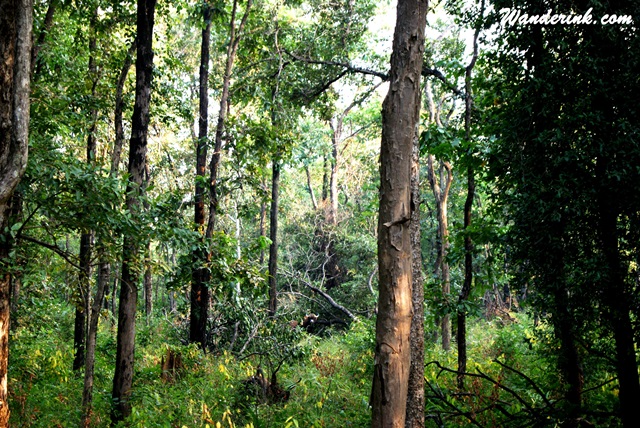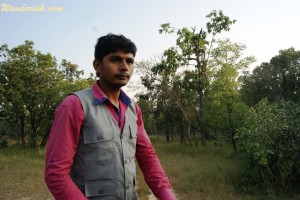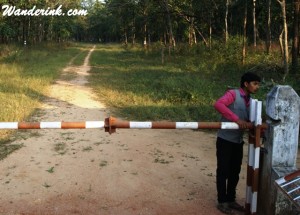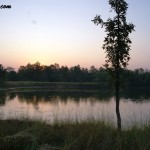Project Tiger has its takers and detractors. As much as I want to believe in its power to have rejuvenated wildcat numbers what I have seen on the ground makes me a sceptic. Rather, what I have not seen on the ground – the tiger itself. Sariska, Kanha, Corbett, Bandhavgarh and Barnawapara – all last year. And the Achanakmar so far this year. No Stripey crossed my path anywhere; not even a footprint. Nada! But according to reports, their numbers have gone up from around 1400 to over 2000. A marvellous thing, but the ponderable worry is with forest covers giving way to mining, encroaching villages or highways, where will they all go? Where have they all gone?
Maybe it’s about looking – looking right. For seasoned guide and wildlife spotter Khoobchand Singh making a beeline for the watering hole is an old one. While he may not exactly steer clear of the watering holes – called ‘transition areas’ in official wild-spotting parlance – being a jungle safari guide for almost a decade he has perfected many techniques to spot the big elusive. Here he shares some.
- Following monkey calls: Langurs and macaques make alarmed cries from tree tops when they spot any approaching wild animal. Following the direction of their gaze might give an idea which direction to head to in order to maximise chances. Similarly, bird behaviour or bird calls will also alter considerably if there are predator birds nearby like the vulture.
- Bulbuls are found usually in areas where wild animals gather – as they provide the peck-and-clean service from parts out of their reach. Yes, they do not necessarily have to be tigers or leopards. But anything big, including a stray cow.
- Sloth bears are known to remain in the same area for longer durations compared to other wild animals; probably why they are called that. If they have been spotted somewhere the previous day, there is a good possibility that they still could be in the general area.
- Watch for trails left behind by animals – like tracks or scat. The only challenge here is that you are in a vehicle which runs through fixed tracks which generally animals stay clear of. However the clearing left behind by wild boars through thick undergrowth is not hard to find. Follow it or hover around.
- Carry your binoculars. While helping to maintain a safe distance from wild animals, this is quite handy when trying to spot birds. Clattering to a stop in a rickety jeep near a tree is not a good idea if you have to take a good look at the avifauna above it.
- Animal and bird calls: Khoobchand cups his hands over his mouth and mimics with great art different monkey and bird calls. And most of the time it is reciprocated. One can at least hear the real thing.
- Transition areas are usually areas like river banks or estuaries with access to food and water. In sanctuaries, these would be the watering holes. However for better chances of seeing animals by the water, one has to approach it very quietly. Or view it from a distance. Waiting atop the watchtowers near the holes has also been known to deliver.
- Early bird catches the prey. This is the jungle rule when it comes to breakfast. Lunch and dinner too. Getting on the first vehicle inside the sanctuary vastly improves chances. As does getting on the last one out. Who doesn’t like a snack before bed!
Then, if none of these works just remember the popular refrain these days from the guides themselves: Why don’t you just enjoy the jungle in the safari? After all, isn’t the jungle something you don’t get to see in your city?
Khoobchand Singh is a local boy and safari guide at the Barnawapara Wildlife Sanctuary of Chhattisgarh. He is not very good in English but very hardworking and good at his job – spotting whatever wildlife there is. His mobile number is + 91 9754172581















Thanks for the tips. And for keeping it simple.
Welcome Vibha. Hope you find them useful.